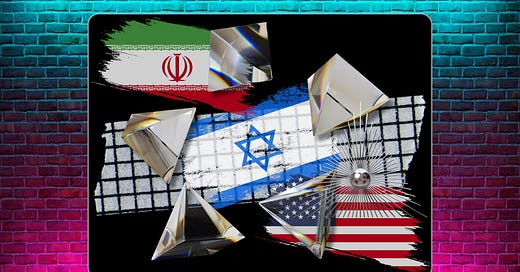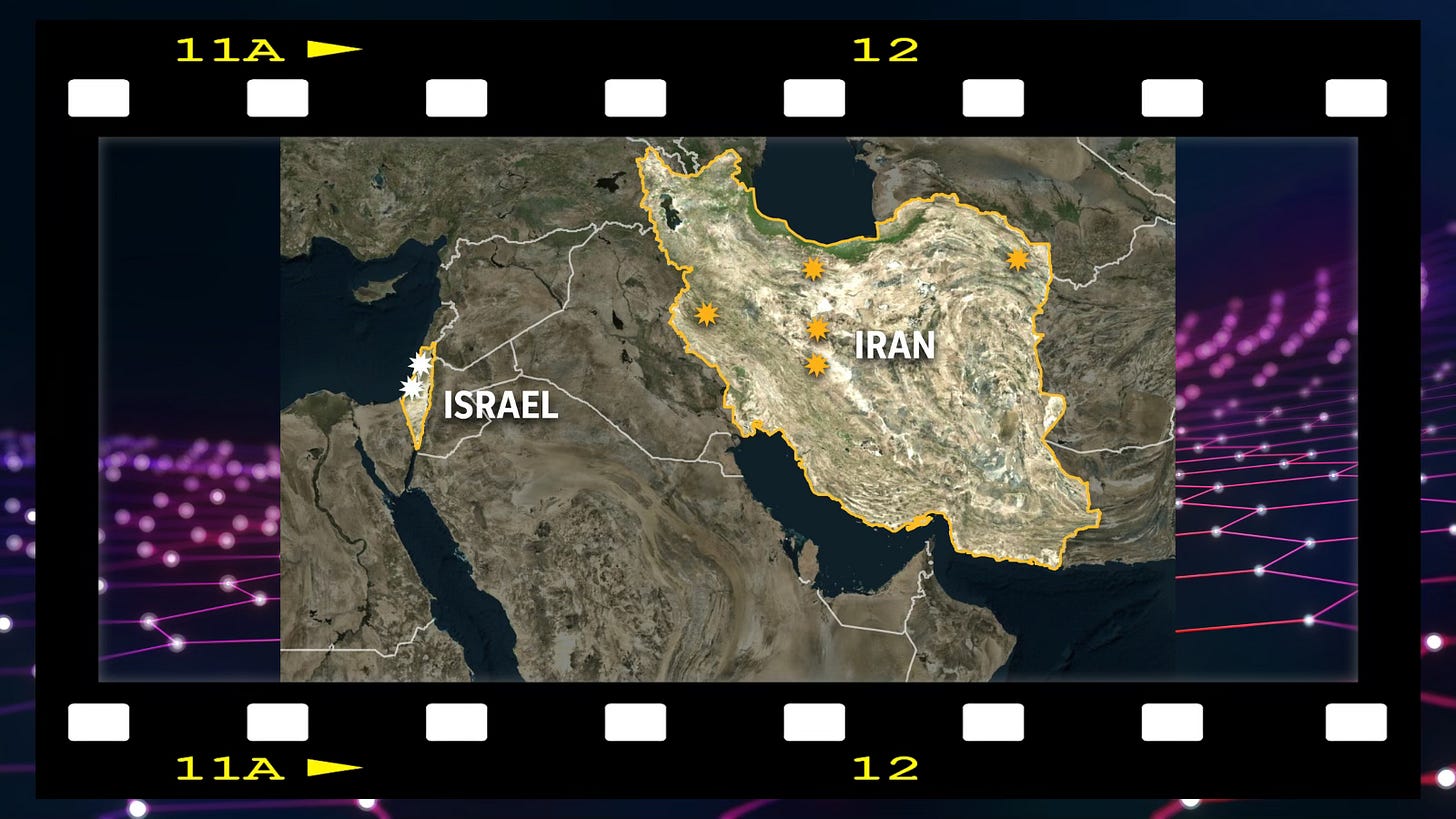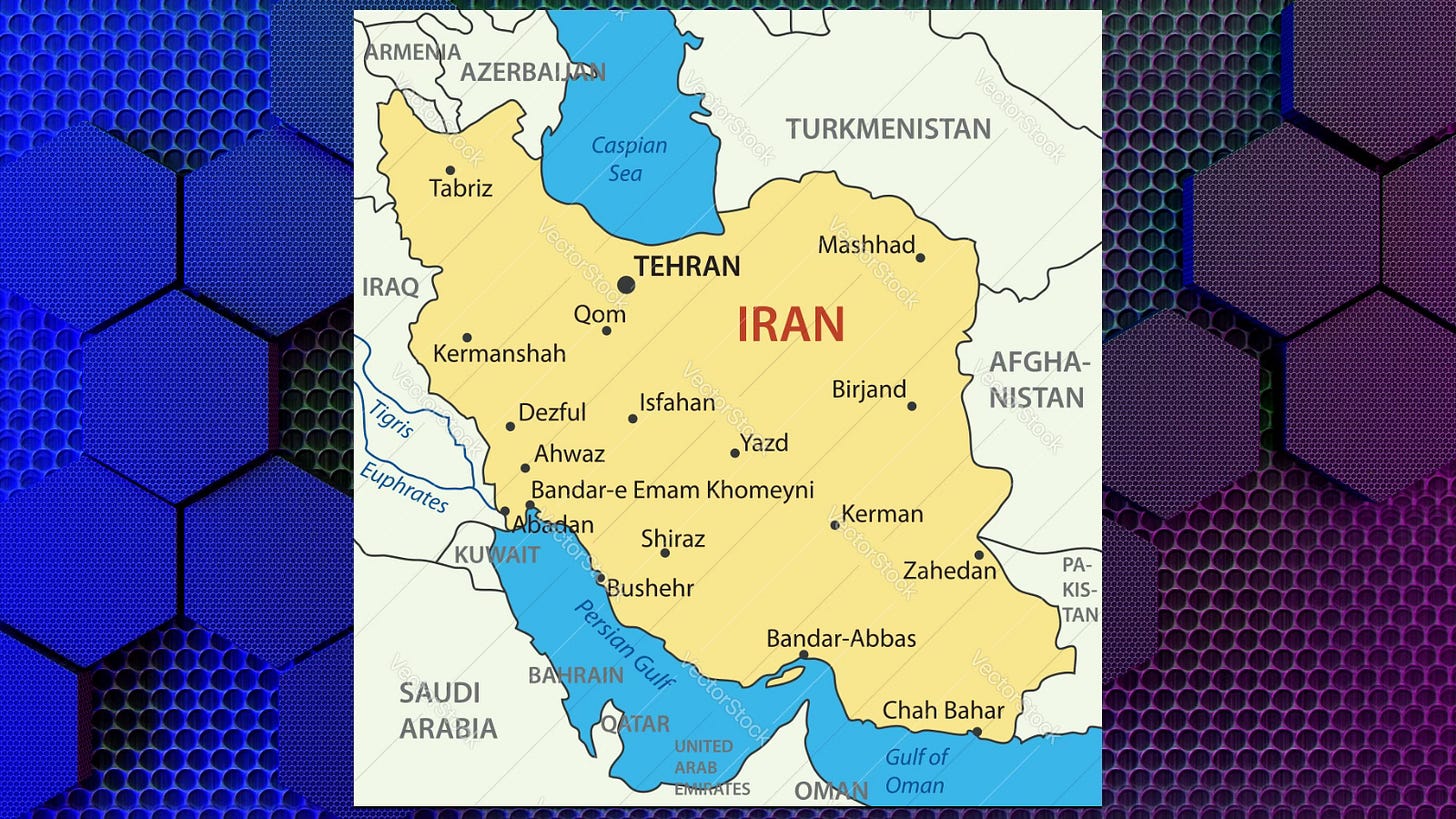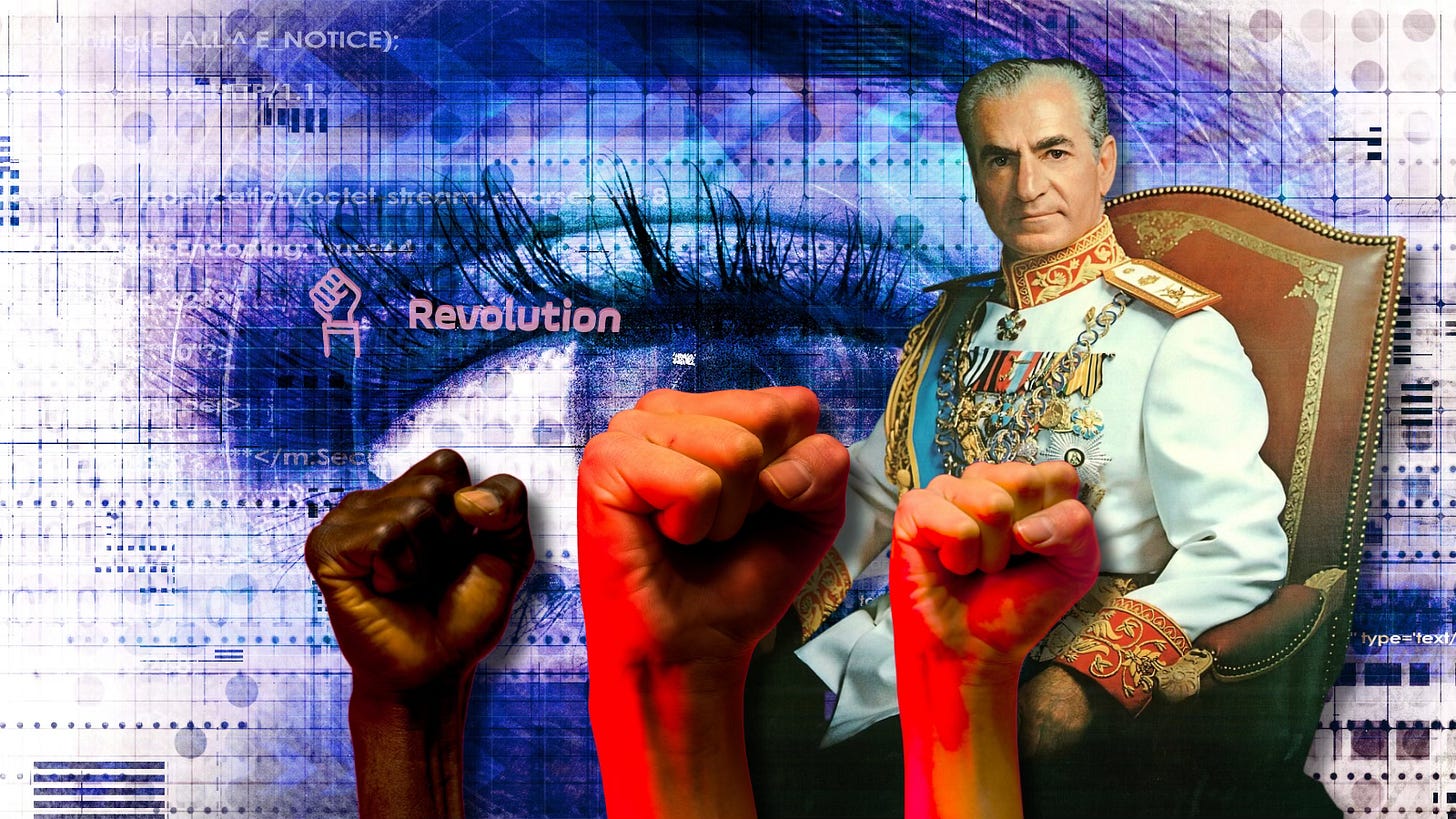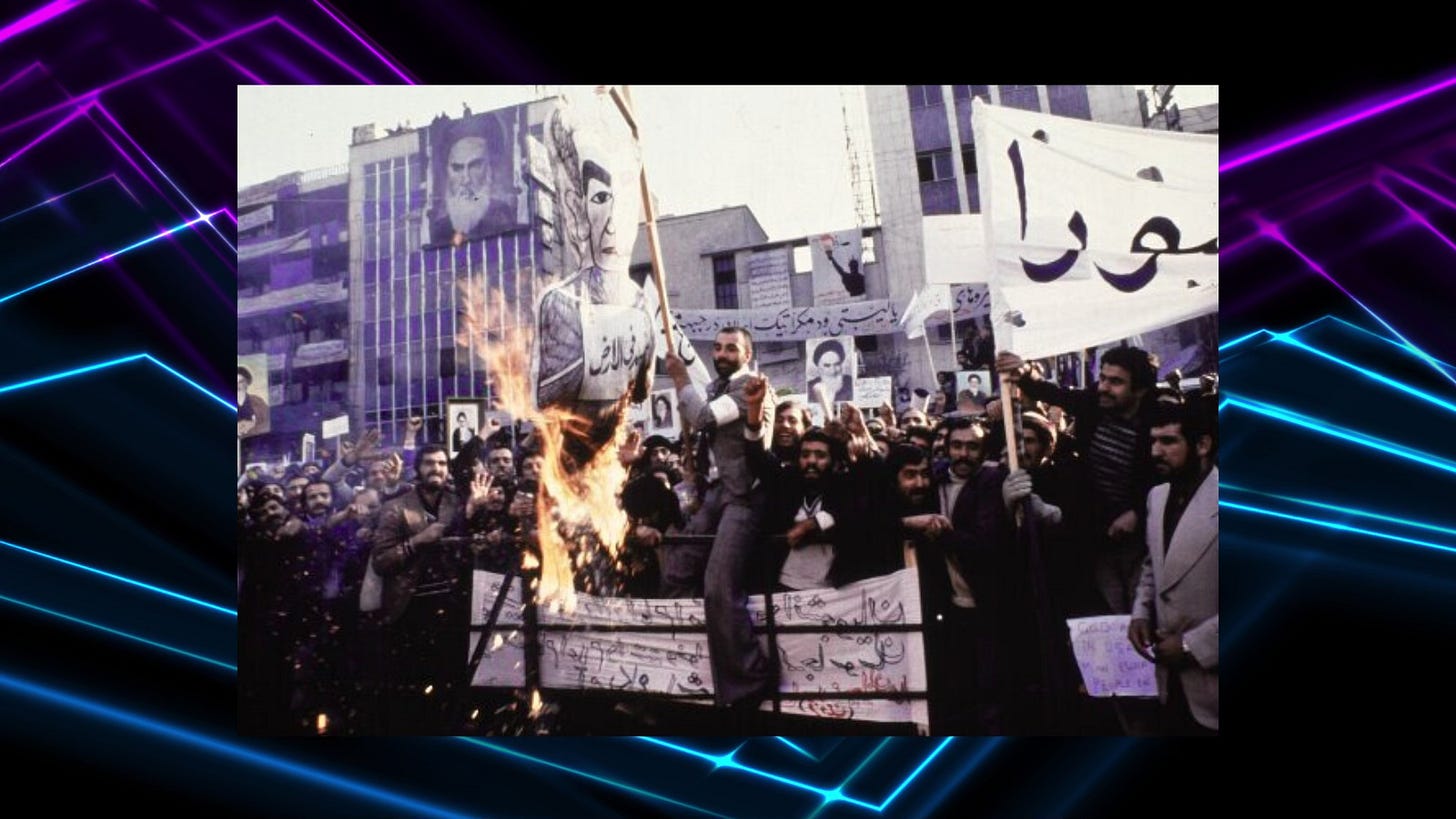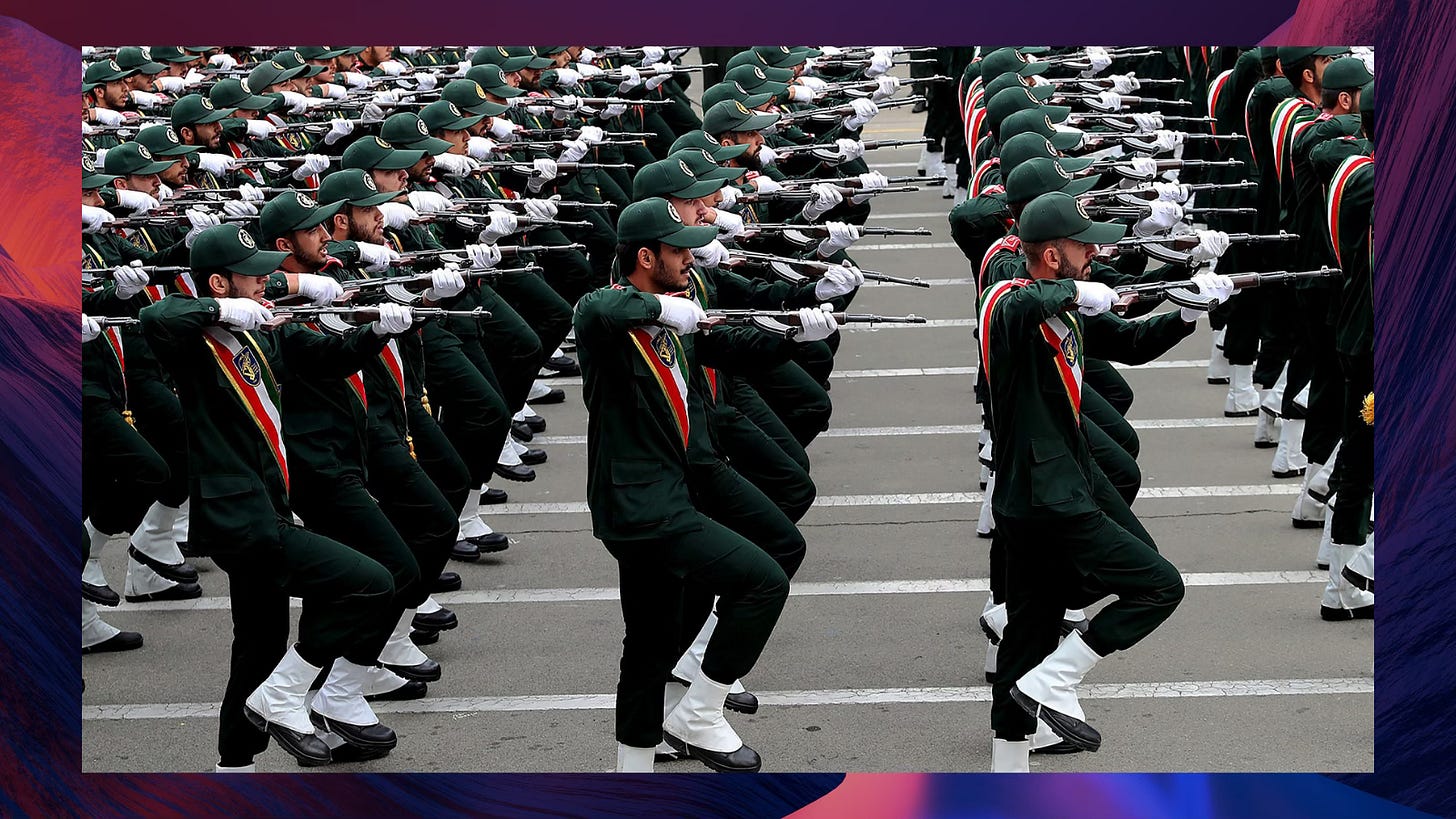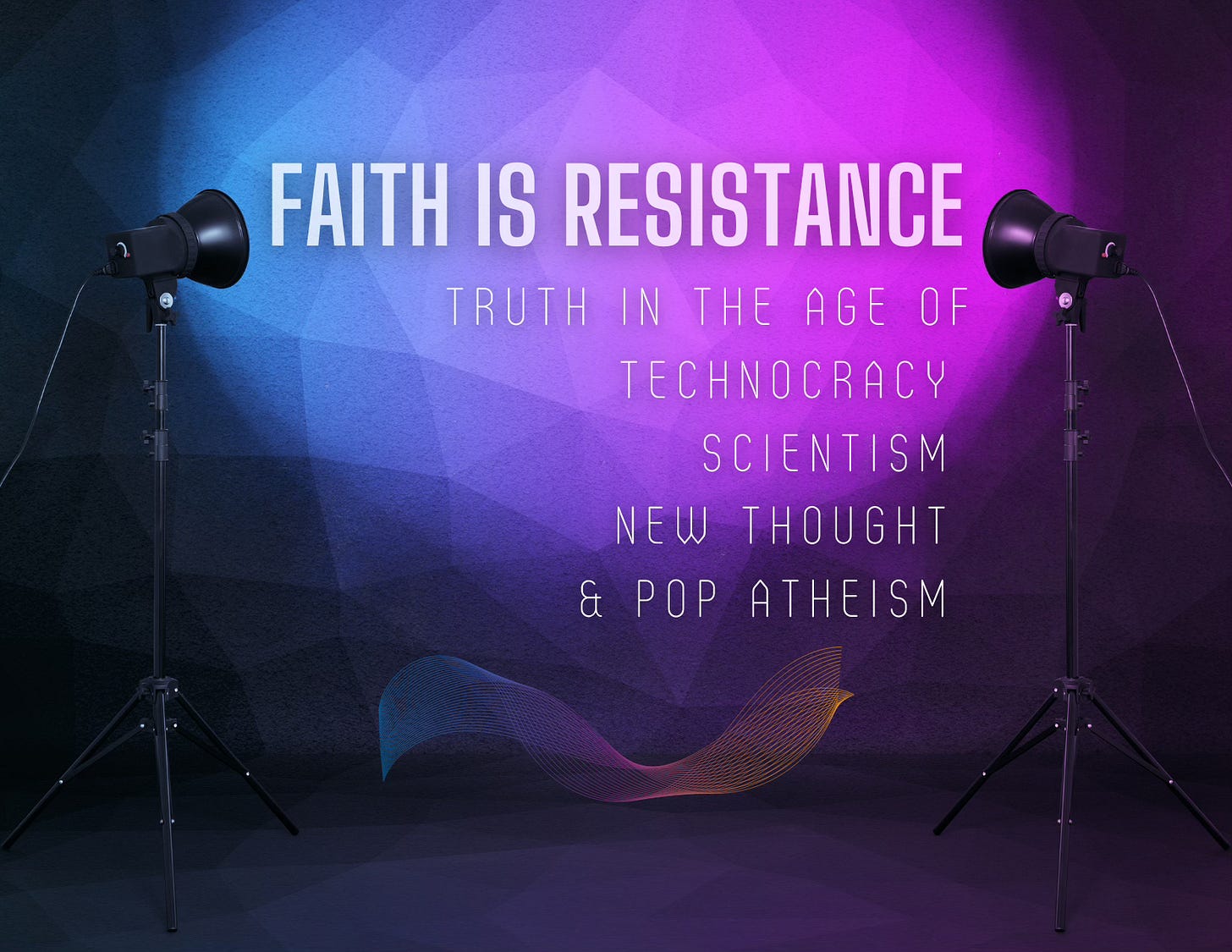The History of Iran and Relations with Israel and The United States
A brief background to understand the current conflict
Ancient Persia to World War II: Legacy of Empire and Decline
The story of Iran begins with the Persians, an Indo-European people who settled in the Iranian plateau and established one of the most influential empires in antiquity. The Achaemenid Empire (550–330 BC), founded by Cyrus the Great, was marked by unprecedented administrative sophistication, a respect for local cultures, and a broad-reaching imperial rule that stretched from the Indus Valley to the Balkans. The empire's fall came with Alexander the Great's conquests, giving way to successive Iranian dynasties: the Parthians, the Sassanians, and eventually Islamic Caliphates.
Following centuries under Arab, Turkic, and Mongol control, the Safavid dynasty (1501–1736) reasserted Persian independence and institutionalized Twelver Shi'a Islam as the state religion, a theological commitment that remains central to Iran’s identity today.
By the time of the Ottoman Empire's dominance (1299–1922), Persia (Iran) retained independence but was periodically weakened by internal strife, colonial incursions, and imperial Russian and British meddling. Iran remained neutral during World War I, but was nonetheless occupied by British and Russian forces. In World War II, despite declaring neutrality, Iran was again occupied by the British and Soviets in 1941 to secure oil supplies and supply lines to the USSR, leading to the abdication of Reza Shah Pahlavi in favor of his son, Mohammad Reza Shah.
The Rise of Modern Iran and the Islamic Republic
In the mid-20th century, Iran was a secularizing, Western-aligned monarchy under the Pahlavi dynasty. The country saw rapid modernization, education reforms, and economic development. It was a U.S. ally, especially during the Cold War, and received support in military and economic realms.
However, political dissent grew, especially after the 1953 CIA and MI6-backed coup against Prime Minister Mohammad Mossadegh, who had nationalized Iran’s oil industry. The restoration of the Shah to power was seen by many Iranians as American imperialism.
By the late 1970s, widespread discontent fueled by political repression, economic disparity, and the perception of Western-backed tyranny led to the 1979 Islamic Revolution. Ayatollah Ruhollah Khomeini, a radical Shi’ite cleric, led the revolt and created a theocratic republic under velayat-e faqih (“guardianship of the jurist”), establishing clerical supremacy over all civil authorities.
One of the earliest signs of the new regime’s hostility to the West was the U.S. Embassy hostage crisis, in which 52 Americans were held for 444 days, a defining event that ended formal diplomatic ties between the U.S. and Iran.
Today, Iran operates under two overlapping governments:
The elected republic (president, parliament, ministries)
The Islamic Republic (Supreme Leader, Revolutionary Guard, religious courts, Basij militia)
This dual structure enables the regime to maintain the façade of republicanism while centralizing ultimate power in unelected clerical hands.
The Pre-Revolution Government and Rise of Shi'a Theocracy
Before 1979, Iran was governed by a constitutional monarchy. Though the Shah held considerable power, the nation was formally aligned with Western legal, commercial, and cultural norms. The monarchy’s success was mixed—it achieved rapid modernization and military strength but at the cost of political freedom and religious alienation.
The 1979 revolution was orchestrated by Twelver Shi'a Islamists—a sect that believes in a line of twelve divinely guided imams, the last of whom (the Mahdi) will return to bring justice. This apocalyptic, revolutionary theology makes the Islamic Republic uniquely aggressive. It sees itself not merely as a state, but as the vanguard of an eschatological mission, and a counterweight to Sunni dominance (like Saudi Arabia) and Western imperialism.
What distinguishes Khomeinist Shiism from other Islamic expressions is its totalitarian ambition: the state must not just be influenced by Islam—it must be entirely ruled by Islamic clerics, awaiting the return of the Mahdi.
Leftist Revolution as Tactic: Was 1979 a Color Revolution?
The 1979 Revolution, though distinct from Soviet-style Marxist uprisings, shared similar tactical patterns seen in revolutionary movements in Russia, China, and elsewhere:
Mobilization of youth: university students and street demonstrators became the foot soldiers of revolution.
Anti-establishment narratives: a mixture of Islamic traditionalism and Marxist-Leninist critiques of capitalism and Westernization.
Exploitation of popular resentment: anger at Western interference, class disparity, and corruption.
Use of liberalism as bait: many revolutionaries (including Leftists and moderates) thought they were fighting for democracy and rights, but the Islamists soon betrayed them.
Indeed, many of the secular or Marxist factions that joined the revolution were quickly executed or suppressed. This follows the classic pattern: the vanguard class of “useful revolutionaries” is discarded after its purpose is served. Thus, while not exactly a Western-sponsored “color revolution,” the Iranian revolution was methodologically revolutionary in the Leninist sense: sudden, manipulative, and consolidated quickly by a hardline ideology.
The Islamic Republic Since 1979: Terror Sponsorship, Regional Aggression, and the Current War
Since its founding, the Islamic Republic of Iran has exported its ideology through proxy warfare and terror. The regime funds and arms groups such as:
Hezbollah in Lebanon (responsible for attacks on Israel and U.S. forces)
Hamas and Palestinian Islamic Jihad
Kata'ib Hezbollah and Asa'ib Ahl al-Haq in Iraq
Houthi rebels in Yemen
Shiite militias in Syria
This network is coordinated by the Islamic Revolutionary Guard Corps (IRGC), especially its Quds Force, a military-intelligence unit for external operations.
Iran’s animosity toward Israel is theological and existential: it denies Israel’s right to exist and aims to surround and destroy it. Its slogan, “Death to Israel, Death to America,” is not rhetorical, it reflects strategic objectives.
U.S. Presidential Relations:
Carter (1977–1981): perceived as weak during the revolution and hostage crisis.
Reagan (1981–1989): covert confrontation, Iran-Contra scandal.
Bush (2001–2009): designated Iran as part of the “Axis of Evil.”
Obama (2009–2017): pursued the controversial Iran nuclear deal (JCPOA).
Trump (2017–2021): withdrew from JCPOA, killed IRGC General Qasem Soleimani.
Biden (2021– ): resumed diplomacy but increasingly pressured due to escalations.
Despite anti-U.S. rhetoric, Iran respected American resolve under Reagan and Trump, both of whom used force decisively. It has shown less fear under administrations favoring diplomacy, often interpreting it as weakness.
The Iranian People
Today, the vast majority of Iranians do not support the Islamic Republic. Protest movements, especially by women and students, have repeatedly risked death to oppose the regime. The republic survives through mass surveillance, indoctrination, and violence, much like the communist regimes of the 20th century. It is not a legitimate representation of its people, but a clerical dictatorship with a military-theocratic apparatus.
The Current Crisis and the Role of the United States
With the current conflict between Israel and Iran escalating, particularly over Hezbollah provocations in the north and Iranian proxies attacking from Gaza, Syria, and Iraq, the U.S. is being drawn into the fray. Why?
Israel lacks the bunker-busting ordnance and stealth delivery systems necessary to destroy deeply buried Iranian nuclear and military infrastructure.
The U.S. possesses GBU-57 Massive Ordnance Penetrators and platforms like the B-2 Spirit and F-22/F-35 jets—needed for such a strike.
As Hezbollah launches precision missiles, and Iran tests Israel’s limits, the potential for full-scale war rises. A U.S.-Israel joint operation would be catastrophic for Iran’s infrastructure but could trigger regional war involving Syria, Iraq, and even Russia.
The world is watching. If the United States acts, it will be because only it can deliver the strike capability needed to decapitate the Islamic Republic’s war machine. But it would also be stepping into a war against a deeply entrenched ideology that is both political and apocalyptic.
Written by Brad Ward, Director, Armor of Truth
All Israel is Not Israel: Christian Zionism and Spiritual Shipwreck
Speculating about “End Times” is big business. Since at least the 1980s, when Hal Lindsey published his bestseller of false prophecy, The Late Great Planet Earth, modern Christians have begun to structure their spiritual lives around prophetic "possibilities,” especially headlines that have anything to do with the geopolitically significant modern natio…
READ/SAVE/SHARE :
Sources:
Axworthy, Michael. A History of Iran: Empire of the Mind. Basic Books, 2008.
Keddie, Nikki R. Modern Iran: Roots and Results of Revolution. Yale University Press, 2006.
Takeyh, Ray. Guardians of the Revolution. Oxford University Press, 2009.
U.S. State Department Reports on Terrorism, 2019–2024.
RAND Corporation, Iran’s Military Power.
Bahgat, Gawdat. “Iran and the United States: A Conflict Without End?” Digest of Middle East Studies, vol. 16, no. 1, 2007.


